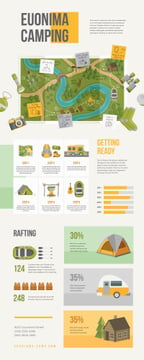Your digital footprint is whatever that can be traced back to you online. It includes your pictures, blog posts and browsing history. It can likewise include metadata from applications.
When was the first tent invented?
Adding a footprint to the bottom of your camping tent is a simple means to lower abrasion and channel water under throughout a storm. It can likewise aid maintain you cosy.
1. It protects your tent
Using a footprint under your camping tent includes an additional layer of protection between the bottom of your shelter and the soaked ground listed below it. This can aid protect against abrasions to the sewn-in floor of your tent and it can keep water from pooling underneath your backcountry castle.
While the floor of many contemporary outdoors tents is made of water resistant materials like silnylon or dyneema, they can still pierce, grab and develop holes from duplicated contact with the rough, pointy, dirt-covered or sandy ground. An impact can secure the bottom of your tent from these aspects and it can additionally make pitching and leaving camp much easier.
Some producers provide camping tent footprints especially made for their shelter versions, which can ensure a terrific fit. If your camping tent does not included an impact, you can quickly make one yourself out of Tyvek or other tough, lightweight textile. Nonetheless, when making a do it yourself impact, make certain that it's an inch much shorter than your sanctuary on all sides to prevent producing pockets of moisture that can gather underneath your camping tent
2. It prolongs the life of your camping tent.
An impact is an added layer of water-proof product that goes under your camping tent floor. It safeguards the material from abrasion and offers a barrier against soil dampness that can create damages to the camping tent's waterproofing.
Tent impacts are usually made from a sturdy, light-weight product like nylon. They might likewise have a higher denier count than your outdoor tents's flooring to boost toughness and durability. Footprints can be expensive, specifically if they're particularly produced your tent. For backpackers or those on a spending plan, do it yourself choices like plastic tarps and Tyvek wrap are more inexpensive and equally as reliable at expanding the life of your outdoor tents.
An impact ought to be cut to be simply a little smaller sized than the actual flooring of your camping tent on all sides. If it's too huge, it can capture rainwater trickling off your camping tent's rain fly and create puddling-- a significant source of water leakage. A cut footprint stops this from happening.
3. It protects your camping site
A camping tent footprint is a wonderful method to protect your financial investment in your camping tent from invasive wetness, rocks, and pebbles that can harm or deteriorate the hot tent stove floor of your tent. It also helps reduce the quantity of dirt that is tracked right into your camping tent making it a cleaner and extra comfy space to oversleep.
Numerous tents have an impact available from the supplier which offers a degree of fit and snugness you simply can't get with a do it yourself option. Making use of a tent impact such as this makes installing your camping tent much quicker and easier as it functions as a guide to customer service up the corners and risks of your tent. It likewise provides a completely dry and protective layer under your camping tent in case of rain. This is especially important if you camp in locations that are prone to flooding or rainy problems. Leaving behind an impact also aids avoid any kind of puddles or pools from gathering under your outdoor tents which can harm your sleeping pad and equipment.
4. It protects the atmosphere
An environmental impact is a device that measures the stress exerted on natural deposits by human activities, examining their intake in connection with Planet's regenerative capacity. It is an efficient means to raise recognition about over-consumption of the world's natural deposits and encourage lasting development methods.
The carbon impact gauges the release of a variety of world-warming gases (such as methane, laughing gas and fluorinated gases) into the ambience. The outcomes are revealed in CO2-equivalent devices, which makes it simple to contrast the environment impacts of different tasks, products and countries.
The impact of a firm or individual is based upon a selection of elements, consisting of way of living, consumption, and power resources, as well as the economic climate and population density. As an example, a diet rich in meat and imported pet items has a much higher ecological impact than a vegan diet. Likewise, driving a cars and truck produces more carbon discharges than making use of public transportation or walking. Making use of environment-friendly energy and integrating ecological standards into calls for tenders likewise lower the ecological footprint.
Where do you get glamping?
